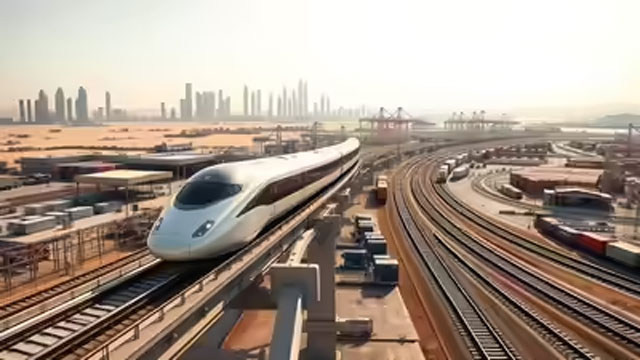Daijiworld Media Network – Riyadh
Riyadh, Oct 18: Saudi Arabia is rapidly advancing its ambitious railway expansion under Vision 2030, with plans to extend its rail network from 5,300 km to over 8,000 km in the coming years. The initiative aims to boost economic growth, strengthen logistics, and transform the kingdom into a key regional transport hub.
At the heart of this plan lies the $7 billion Landbridge Project — a 1,500-km railway corridor connecting Jeddah on the Red Sea coast to Dammam on the Arabian Gulf through Riyadh. Once completed, the corridor will reduce travel time between Jeddah and Riyadh from 12 hours to under four. It will feature a new 900-km rail link, upgrades to the Riyadh-Dammam line, and the creation of seven logistics hubs to support freight movement across the country.

Saudi Arabia Railways (SAR) has already awarded major contracts, with design work progressing steadily. The Landbridge will also connect King Abdullah Port and key industrial centers like Yanbu, establishing an efficient backbone for freight between ports and cities.
In parallel, SAR is modernizing its passenger fleet with 15 new high-speed trainsets capable of running at 200 km/h, designed to endure Saudi Arabia’s extreme temperatures. Among the upcoming attractions is the “Dream of the Desert” luxury train, expected to launch by the end of 2025, offering an 800-mile scenic journey from Riyadh to Al Qurayyat through natural reserves and heritage sites.
The modernization drive also includes the introduction of hydrogen-powered trains, smart signaling systems, and digital safety controls. With over 2.6 million passengers traveling inter-city by rail in the second quarter of 2025 alone, Saudi Arabia’s train network is fast becoming a preferred mode of transport.
Regionally, Saudi Arabia continues to play a leading role in the Gulf Cooperation Council (GCC) Railway initiative, which aims to connect all six Gulf countries by rail. The recent approval of Qatar’s cross-border link with Saudi Arabia marks another step toward regional integration and seamless freight connectivity across the Arabian Peninsula.
By 2030, the kingdom envisions a modern, sustainable, and high-speed rail network connecting its ports, cities, and neighboring countries—cementing Saudi Arabia’s position as a transport and logistics powerhouse in the Middle East.